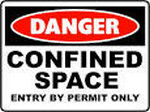Did you hear the story about the Safety Elephant who roamed all over the place stomping people down, messing things up, and completely blocking the ability of the people from having the important safety conversations?
 Yes, the elephant that got in the way of having the conversations that matter? You did? Oh, you have one of those too?
Yes, the elephant that got in the way of having the conversations that matter? You did? Oh, you have one of those too?
Safety First Elephants are big and smelly. Everyone knows they are there because they stink up the place, making it smell rotten. Elephants are also sneaky, often disguised, or even invisible. Sometimes they show up as the bully who tries to push everyone around and control the group. Sometimes it is a boss who just doesn’t seem to care. Sometimes it is “obliviousness” to what is really happening. Sometimes it is simply an undiscussable that has been allowed to fester. Anyone who tries to speak up about an important issue is silenced, put down, demeaned or ridiculed. The elephant just loves this. The elephants are in control! They are having a happy time!
You know that the elephant has a name…yet, you speak of it in whispers. (For the purpose of this Safety Flash, let’s call this elephant, Hiney – the H is for Hidden!) While Hiney is invisible or disguised, Hiney loves for you to talk about him/her in private, with a person you can trust. You might talk about Hiney in the restroom or by the water cooler. You make Hiney really quite visible in these conversations. But when you stay quiet in the situations that really matter – when you could constructively make an issue explicit, but you don’t – then Hiney remains very safe. So back in the workplace, Hiney keeps sneaking around, messing the place all up and stomping all over. Hiney is really very unfriendly – just loving it when someone gets hurt because you couldn’t talk about the real safety problem. Sometimes there are whole herds of Hiney’s!
Hiney is really very afraid of being made visible. If you just look Hiney (aka, the undiscussable) right in the eye and name the big, stinking elephant, everything changes! The big, cowardly, stinky, brutal Hiney seems to just melt away. You can talk about Hiney and work to fix the safety problem. There are courageous, safe ways to name and address the hidden elephants! Hiney can’t stand the light of the truth! Transparency hinders elephant herds. Fewer injuries and incidents will happen when you learn how to lift them up and address them. Call us…We’ll show you how!
 Another paper from an award-winning company showed their outstanding progress in lowering their total recordable injury rate from around 10 to 0.5 through a steady progress of improvements over 10 years. Their work was out of the Newtonian/Cartesian perspective, quite similar to what Mathis and Galloway teach.
Another paper from an award-winning company showed their outstanding progress in lowering their total recordable injury rate from around 10 to 0.5 through a steady progress of improvements over 10 years. Their work was out of the Newtonian/Cartesian perspective, quite similar to what Mathis and Galloway teach. There is no doubt that work in the oil and gas industry is tough and dangerous, but that is no excuse for disregarding the health and safety of the workers. Almost all the deaths occurred when safety procedures were not followed. There is plenty of safety information available relating to tank cleaning. Have we not learned the lessons of improper confined space/vessel entry?
There is no doubt that work in the oil and gas industry is tough and dangerous, but that is no excuse for disregarding the health and safety of the workers. Almost all the deaths occurred when safety procedures were not followed. There is plenty of safety information available relating to tank cleaning. Have we not learned the lessons of improper confined space/vessel entry? But, the machine view of organizations is the dominant paradigm right now. We direct the people to work in tight procedures. We manipulate them to do things right. We punish them when there is an injury or incidents. We look for root-cause. We think that if we can take things apart and understand the parts that we can understand the whole. Almost all the effort is engaged in doing things TO the people as if they were just interchangeable parts of a machine. Most people push back against authority in this paradigm. This is a win/lose environment.
But, the machine view of organizations is the dominant paradigm right now. We direct the people to work in tight procedures. We manipulate them to do things right. We punish them when there is an injury or incidents. We look for root-cause. We think that if we can take things apart and understand the parts that we can understand the whole. Almost all the effort is engaged in doing things TO the people as if they were just interchangeable parts of a machine. Most people push back against authority in this paradigm. This is a win/lose environment. People are often reluctant to speak up in these negative environments. Ideas for improvement never surface. New employees are negatively influenced and led astray. Supervisors have a very rough time getting the people to do their work properly. Grievance rates are high and much time is wasted needlessly because these are not addressed at an early stage.
People are often reluctant to speak up in these negative environments. Ideas for improvement never surface. New employees are negatively influenced and led astray. Supervisors have a very rough time getting the people to do their work properly. Grievance rates are high and much time is wasted needlessly because these are not addressed at an early stage. For most managers putting production first can be quite subtle with messages like:
For most managers putting production first can be quite subtle with messages like: Partner-Centered Safety is a robust, proven way to bring people together to achieve sustainable levels of safety excellence being based on deeply held beliefs and values.
Partner-Centered Safety is a robust, proven way to bring people together to achieve sustainable levels of safety excellence being based on deeply held beliefs and values. Things do not have to be this way! Most of the people know that this is counter-productive but that is the way it is. However, when we engage the people from across the organization in the Complexity Leadership Process, guiding them in a purposeful conversation of discovery that changes everything, they find it does not have to be that way!
Things do not have to be this way! Most of the people know that this is counter-productive but that is the way it is. However, when we engage the people from across the organization in the Complexity Leadership Process, guiding them in a purposeful conversation of discovery that changes everything, they find it does not have to be that way! Most of us working in safety have been brought up to see organizations as if they are machine-like. This thinking goes all the way back to Descartes (1596-1650) and Newton (1642-1727). We use reductionist approaches to try to understand them. We seek cause/effect relationships. We use linear processes for training and the like, prescribing answers and doing things TO the people. We work on this part or that part trying to fix the whole thing.
Most of us working in safety have been brought up to see organizations as if they are machine-like. This thinking goes all the way back to Descartes (1596-1650) and Newton (1642-1727). We use reductionist approaches to try to understand them. We seek cause/effect relationships. We use linear processes for training and the like, prescribing answers and doing things TO the people. We work on this part or that part trying to fix the whole thing. 




